final proyect
vectorial mesh to print
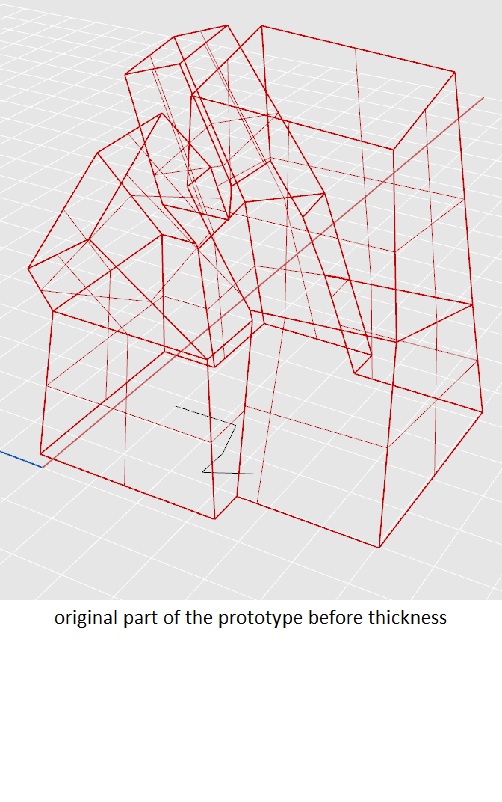

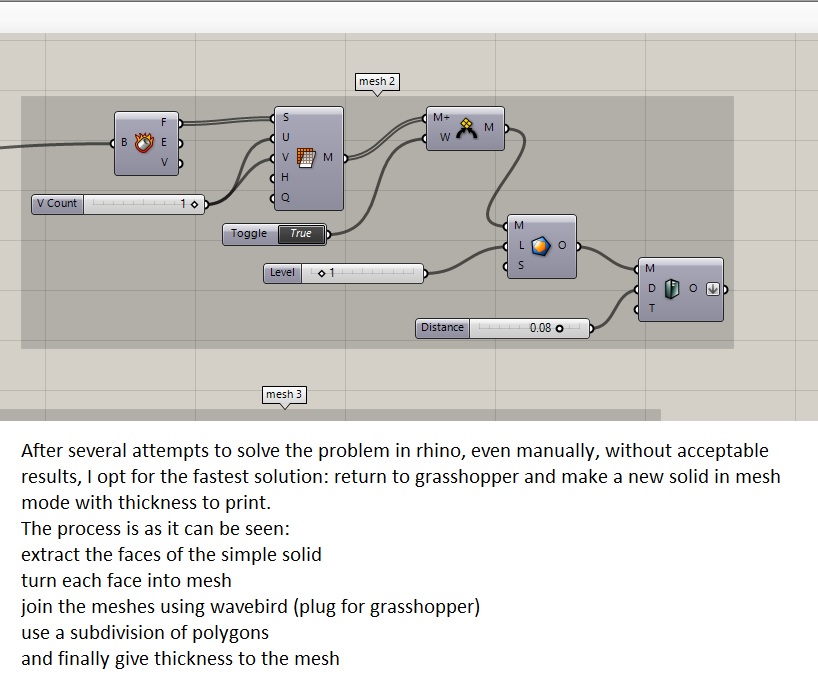

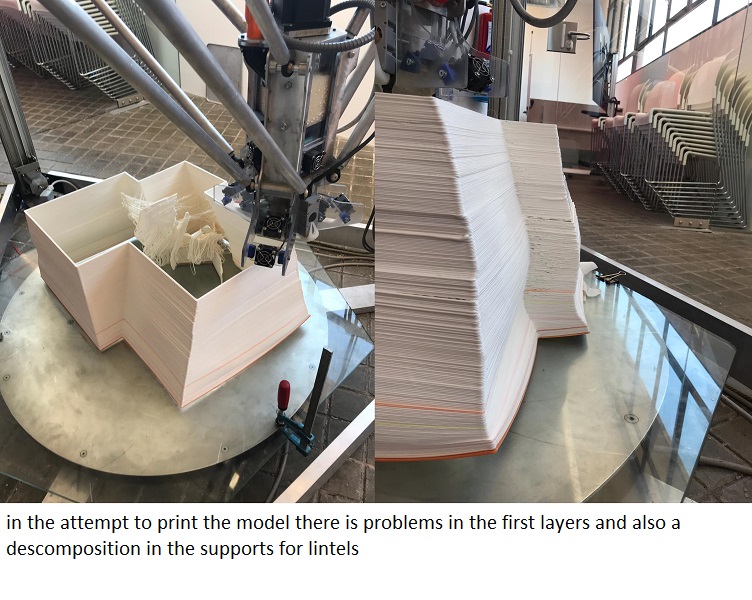
Due to these problems I have been forced to reduce the scale of the prototype almost in half, and delimit a bed at the base to prevent it from getting up.
This is the configuration
and the print process
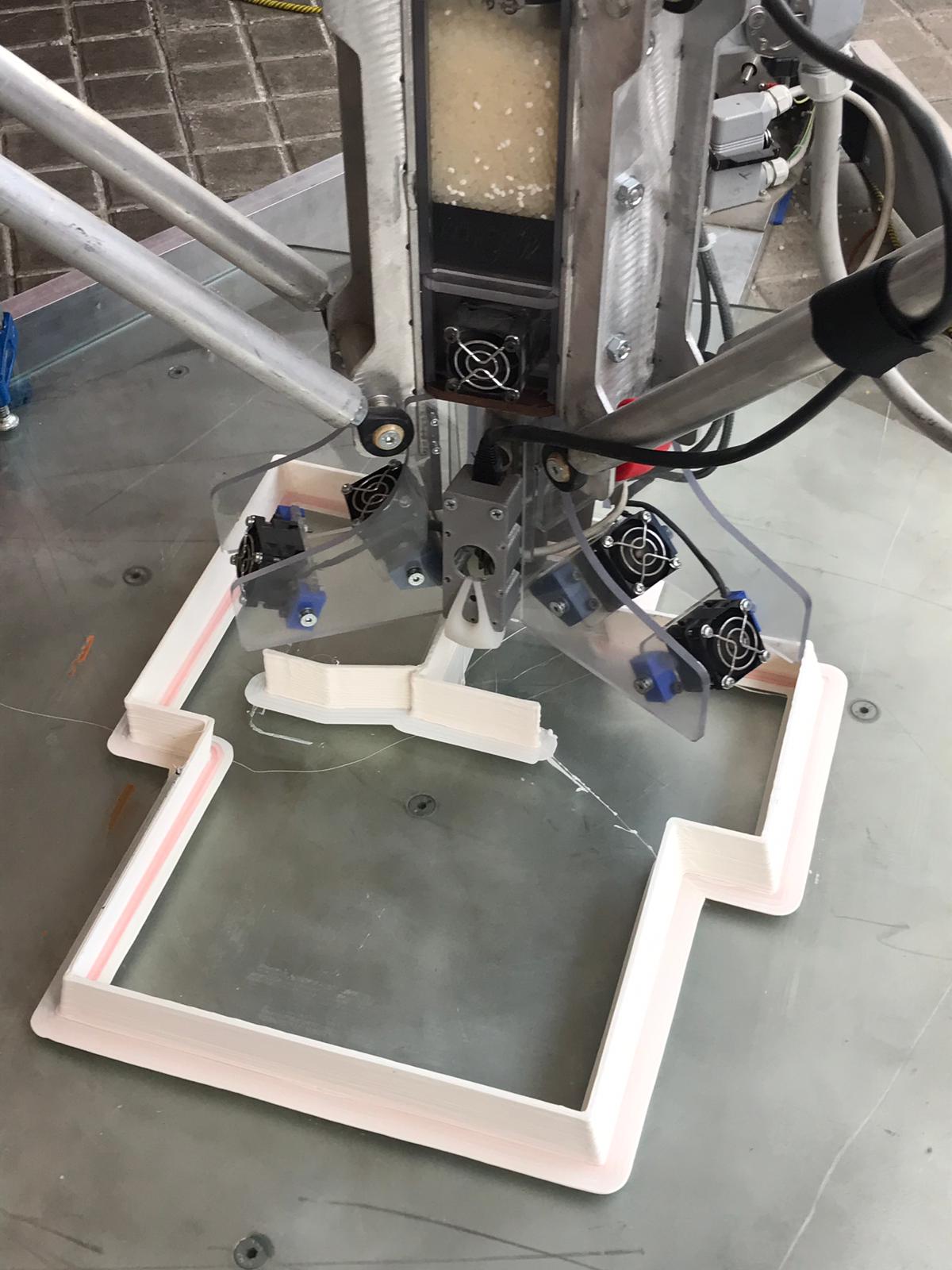
to the final result
.jpg)
.jpg)
.jpg)
in this prototype, and with a certain scale, I have tried to simulate the cords of pouring of concrete. the company collaborating in the project (bemore3d) will use a 600 mm or 900 mm extruder depending on the type of concrete used. this depends to a great extent, in turn, on the setting time, the ambient temperature and the type of arid that is used in the mixture (a patent that I m afraid I can not detail because I do not have access to that information)
.jpg)
.jpg)
.jpg)
cleaning and fixing some print errors
solar cover check
electronics
please refer to network assignment for all the process for boards
network boards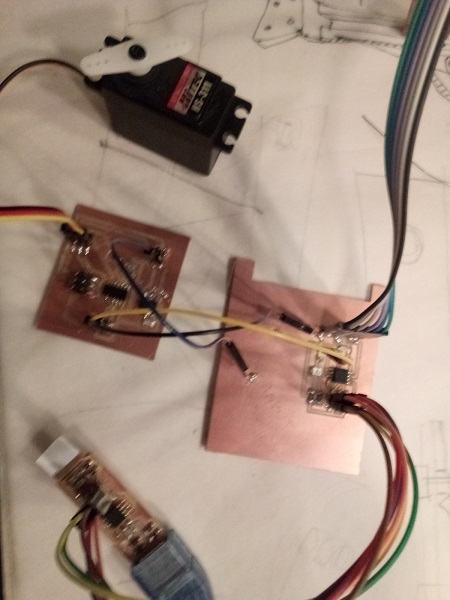

two servos
wifi
the pantheon in its real construction will have a wifi server. in its location there is no wifi signal, so the idea is to generate it within the pantheon itself with short range.The objective is for all visitors to have access to the web on their mobile phones, which is the real reason for the pantheon: the burial of "dada" digital poetry.
router exampleACTIVEPOEM. kinetic poetry from dada inspiration
given the rules of fab academy I try to simulate this wifi configuration with two tests with different components
esp2866 feather HUZZAH
first reading about : " you can program it like any normal Arduino or other microcontroller. And on top of that, you get Wi-Fi communication, so you can use it to connect to your Wi-Fi network, connect to the Internet, host a web server with real web pages, let your smartphone connect" so it seems to fit what I need
programming : semms to be programed in c, using LUA interpreter, using microPyton firmware and arduino IDE
there is different versions so I decide the adafruit feather HUZZAH because there is several components added: 3.3v voltage regulator the usb to serial connection and 4mb flash memory
cautions: runs in 3.3v !!!, so do not use 5V USB-to-Serial converter, or 5V sensors
The ESP8266 has one analog to digital converter, but it has a strange voltage range: 0 - 1V, voltages above 1V might damage the board
6 pins (GPIO 6
- 11) are used to connect the flash memory chip
The ESP8266 has a single analog input, with an input range of 0 - 1.0V. If you supply 3.3V, for example, you will damage the chip
installation:



then we need to download the usb drivers
silicon labs website.however I read :"Boards with an FTDI chip should work right out of the box, without the need of installing any drivers." wich make me some confusing because Adafruit Feather HUZZAH board has it.
and here is the pin table

I connect the esp8266 and get a response
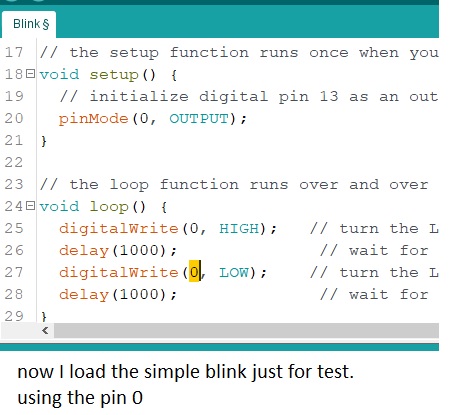
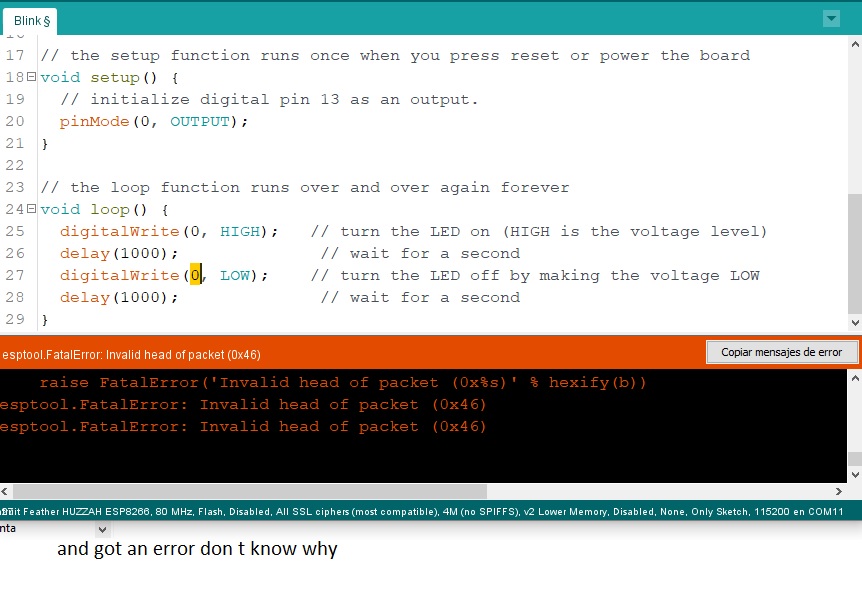
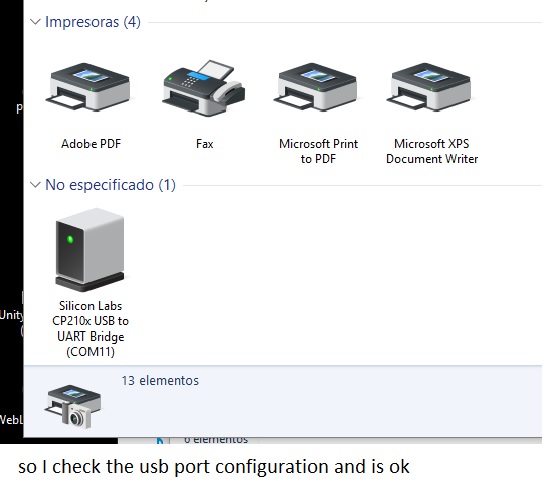
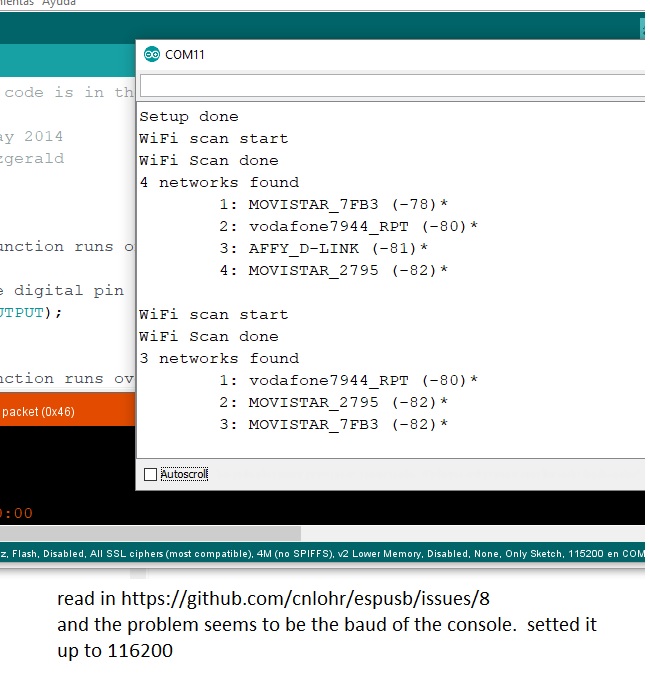
but in new connections I had again similar errors
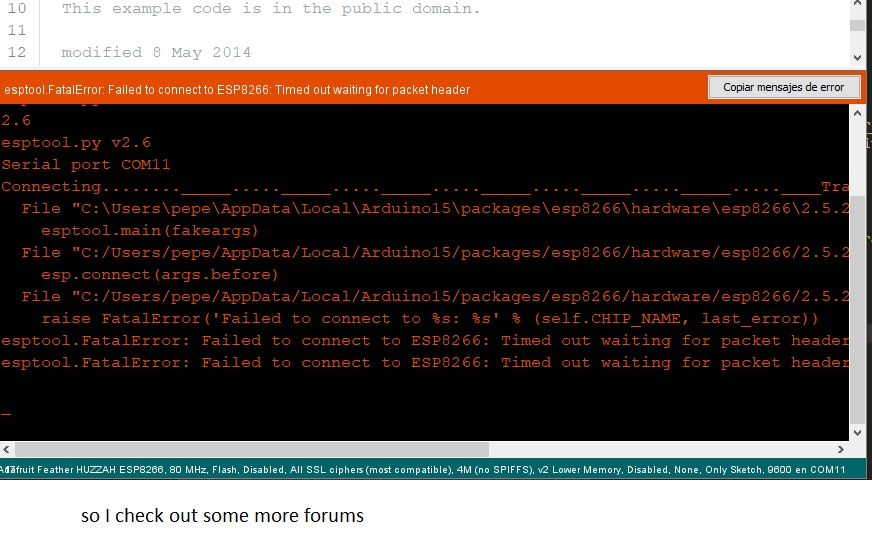
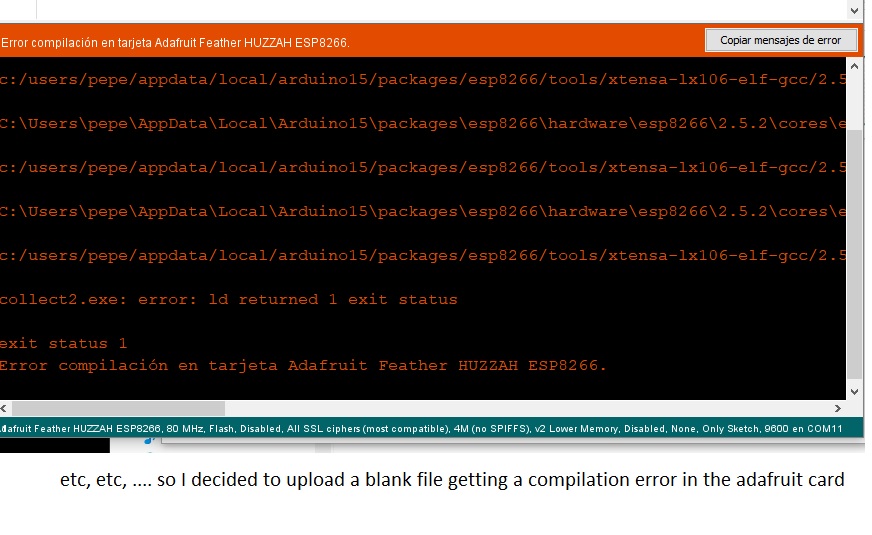
so after trying to change the version I follow the instructions to delete and re install the package as possible solution
link to esp arduionocore forum... but I delete all files of the esp2866 and re install with the same results
<esp2866
justification for use understanding that the policy of use of commercial boards of fab academy is directed to regulate its use only if necessary and occasional and as long as it appears in the work as a complement to the electronics designed and manufactured by the student, and contains a functionality difficult to grasp for this. So, and after having visited other colleagues' websites in this case, and following the instructions of my instructor regarding which boards are admissible and which are not, I refer to this model for my purpose of generating a reduced local Wi-Fi point.


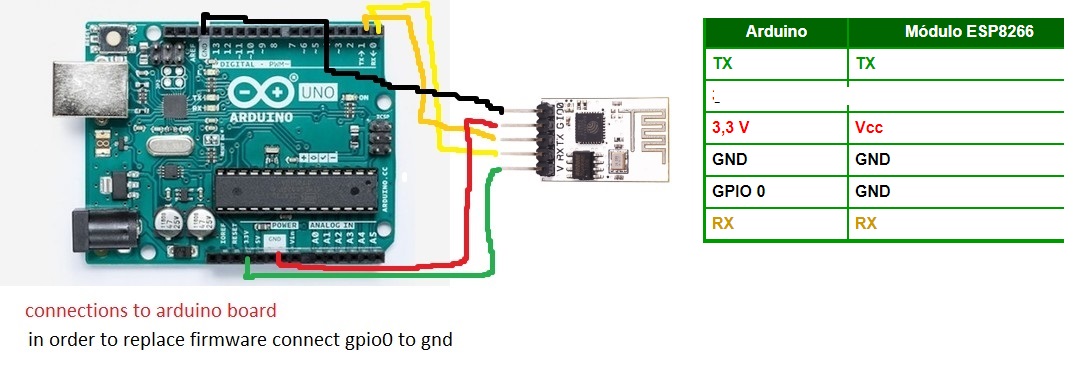
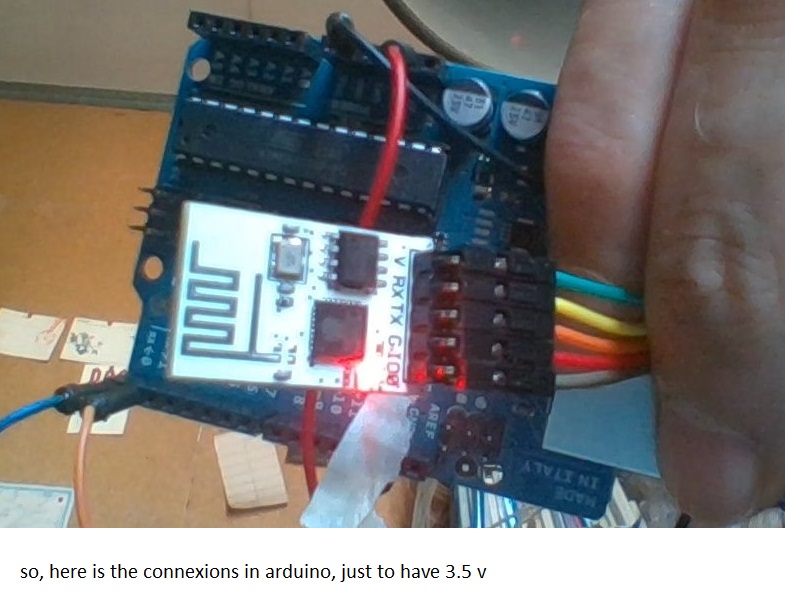
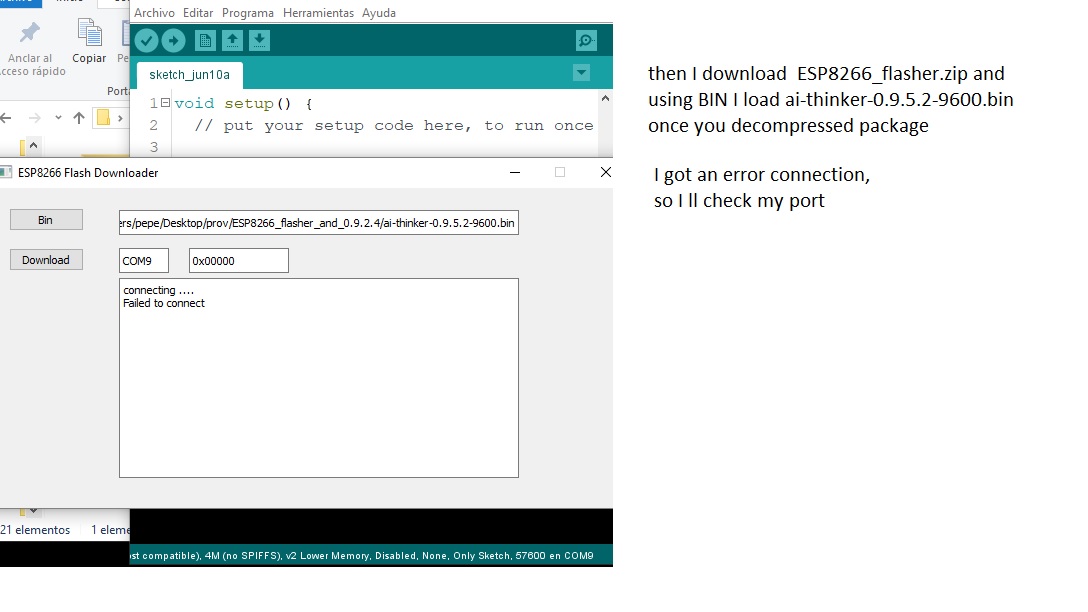
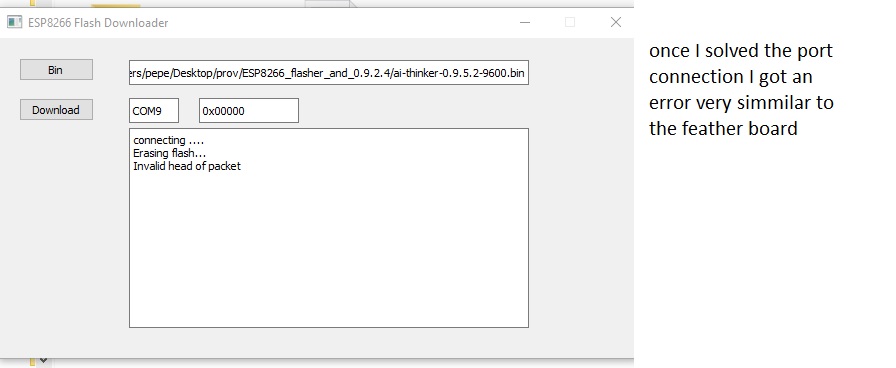
final slide
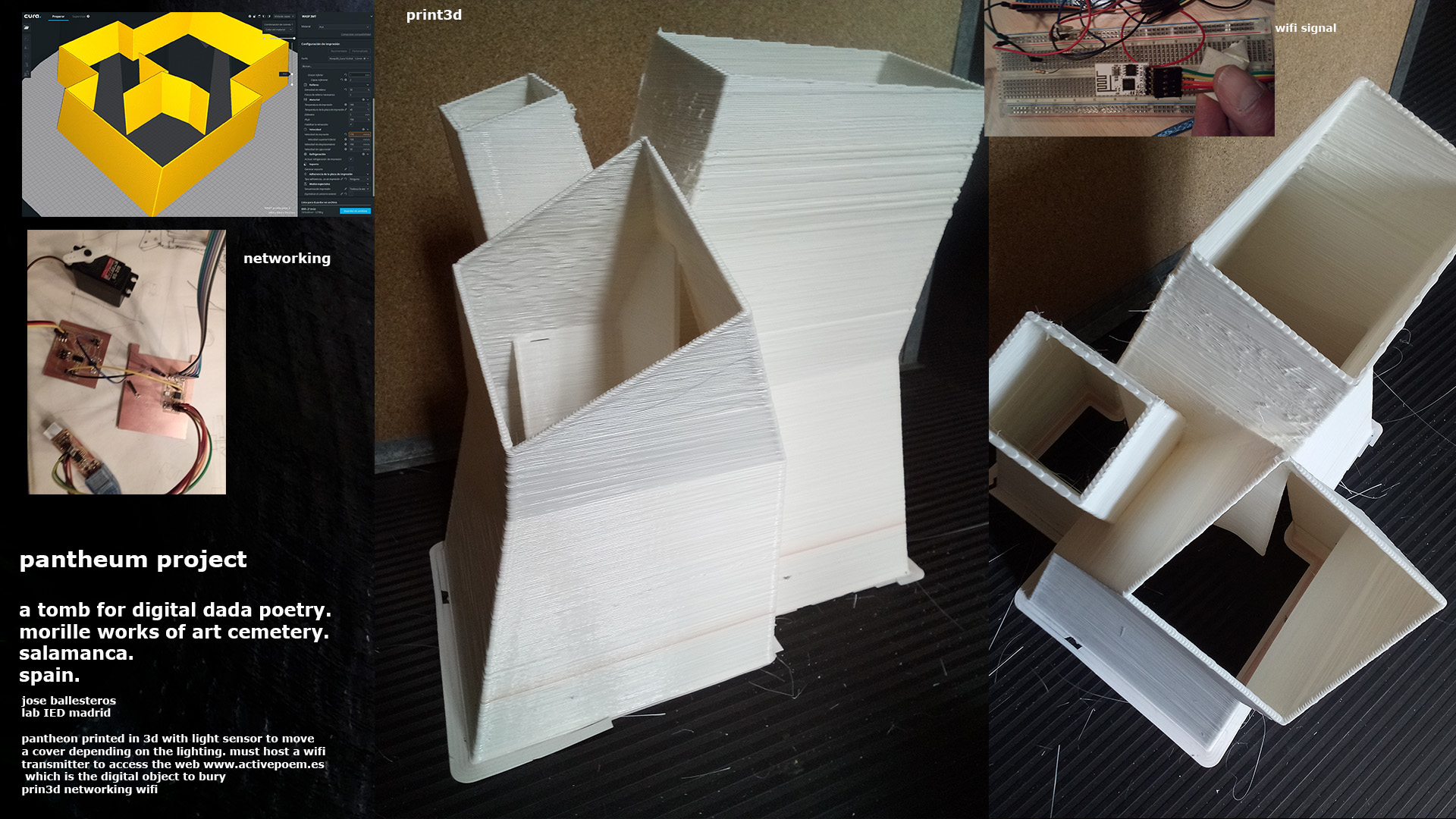
final video
bill of materials
esp8266 serial wifi 5.98 e
bridge wires male male 2.72 e
bridge wires male female 2.72 e
bridge wires female female 2.72 e
adafruit huzzah32 esp32 feather 21.9 e
servo df15rsng 18.30 e
926 lm2940imp5/nopb voltage regulator 1.5 e
provided by fab ied
all boards components ( except lm2940)
3d print model
pcb